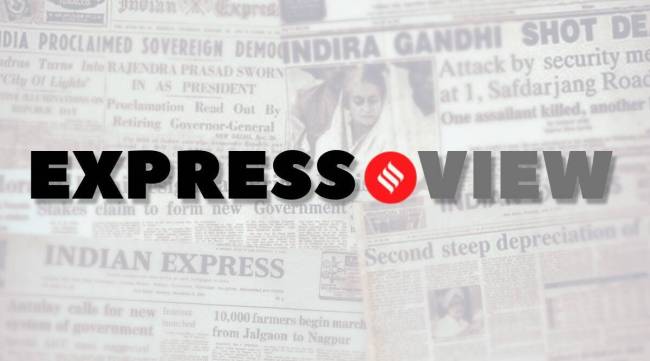Opinion While political parties debate if free electricity is a freebie, discom finances slip and threaten to disrupt the power sector
Distribution companies are the weakest link in the power chain. Rising losses at the distribution level mean that discom dues to gencos continue to go up, who in turn delay payments to coal mining companies, thereby adversely impacting the stability of the entire power sector.
 Improving the financial position of discoms will require timely and adequate tariff revisions and bringing down the aggregate technical and commercial losses, among other measures.
Improving the financial position of discoms will require timely and adequate tariff revisions and bringing down the aggregate technical and commercial losses, among other measures. Last week, Power System Operation Corporation (POSOCO), the national grid operator, asked three power exchanges to restrict the buying and selling of electricity by 27 power distribution companies (discoms) from 12 states and the Union Territory of Jammu and Kashmir because of their dues towards power generating companies (gencos). The action was reportedly taken under the Electricity (late payment surcharge and related matters) Rules 2022, which were notified recently. While several of these states have reportedly cleared their dues since, this incident is yet another reminder of the precarious financial position of discoms.
Distribution companies are the weakest link in the power chain. Rising losses at the distribution level mean that discom dues to gencos continue to go up, who in turn delay payments to coal mining companies, thereby adversely impacting the stability of the entire power sector. While there have been various attempts to turnaround the financial and operational performance of state discoms, the results have been well short of expectations. Each time the size of the bailout has only risen. In the early 2000s, the scheme for repayment of state electricity board dues amounted to roughly Rs 41,500 crore; the financial restructuring plan of 2012 involved an outlay of around Rs 1.2 lakh crore; while under the Ujwal Discom Assurance Yojana (UDAY) in 2015, the bailout was in excess of Rs 2 lakh crore. Yet discom losses have continued to rise, as have their obligations/debt burden. In 2020, Power Finance Corporation and Rural Electrification Corporation sanctioned Rs 1.35 lakh crore of loans to discoms to help clear their dues to gencos. Another package was announced in 2022. The RBI recently estimated that if another bailout is to be structured along the lines of UDAY, then along with the cash infusion that will be needed to pay off their power purchase dues, it would cost state governments Rs 4.32 lakh crore. To put this in perspective — this is more than what the central government spends on health, education or rural development.
Improving the financial position of discoms will require timely and adequate tariff revisions and bringing down the aggregate technical and commercial losses, among other measures. However, political parties are not only reluctant to raise power tariffs, they often try to sway the electorate with the promise of free electricity. But, now, the issue of whether subsidised/free power is a “freebie”, or whether such fiscally imprudent decisions need to be regulated, are being contested with the Prime Minister targeting what he calls the culture of “revdi”. While that debate has now shifted to the Supreme Court, a business-as-usual scenario is unsustainable for the power sector.




